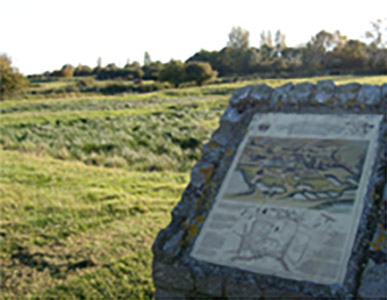The humps and bumps in this field are more significant than you might think. They are the remains of the medieval manor house of Great Woolstone and the fish farm associated with it.
The house was the property of the Pever family up to the middle of the 14th century and the Green family of Wavendon thereafter, but very little is known of its history.
The fish ponds date from the 14th century. They were built near the river so a supply of fresh water could be maintained.
The need for fish
Fish was important in the middle ages because the Church forbade the eating of meat on Fridays and during Lent. Most people ate salted fish, but those who could afford it had fresh fish whenever possible: it was something of a status symbol to be able to do so.
These ponds would have produced fish for the manor house and for sale or to be given as presents.
Varieties of fish
The most common fresh water fish were pike, eel, bream, tench, roach and perch. Carp was not introduced until the 16th century; trout was not valued as a food.
How the farm worked
The first pond to be built here was probably (1), over to the left. This would have been used simple to store live fish caught elsewhere, for example from the river.
Later a system of breeding fish was developed: ponds (2 – 8), held fish at different stages of growth starting with a breeding pond and finishing with a storage pond for mature fish. At each stage of the fattening process the number was reduced and the surplus fed to carnivorous fish such as pike which were held in a separate pond (9).
